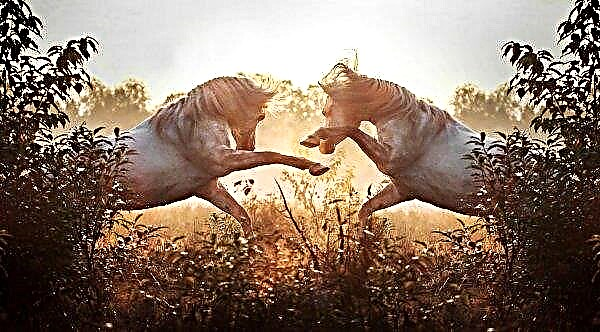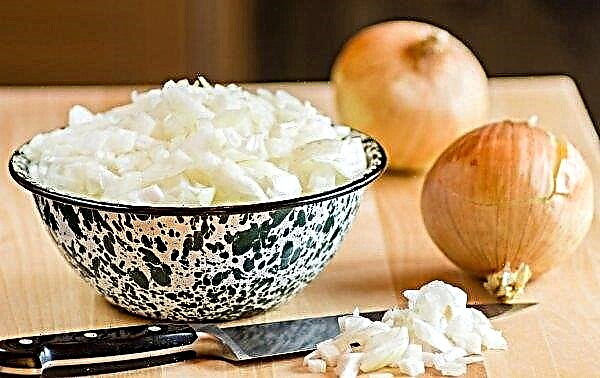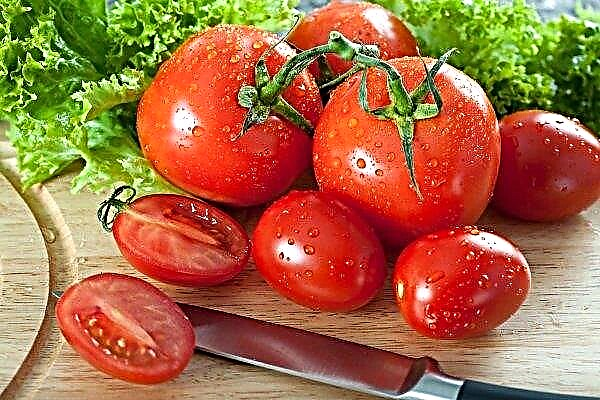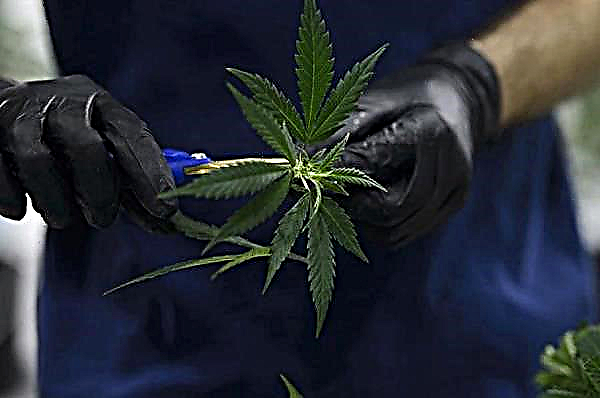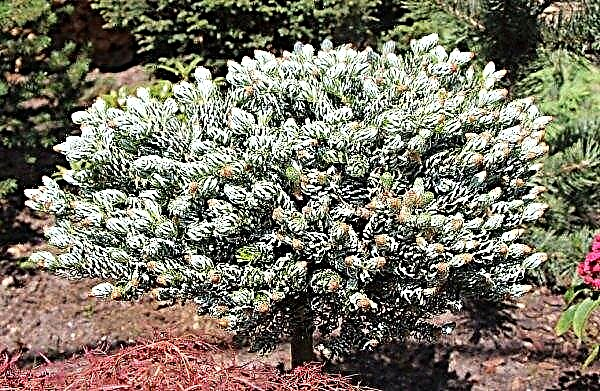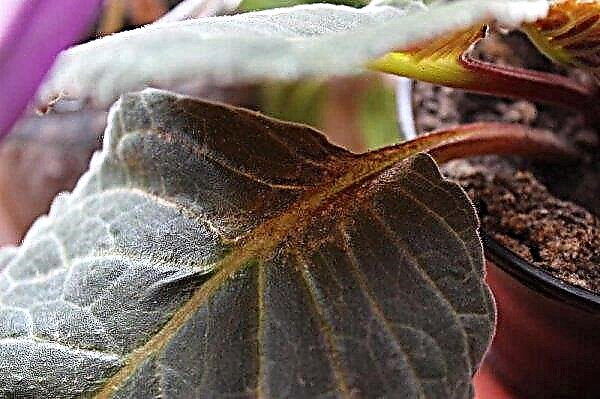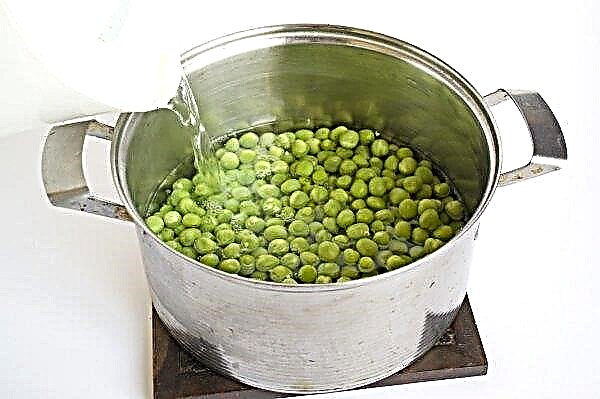Cultivating cauliflower on your own, it is extremely important to know that the volume and quality of the crop are determined not only by the principles of cultivation, but also by the rules for its collection. How to determine the optimal time for harvesting, how to properly clean and store this vegetable, and will be discussed in the proposed material.
Cauliflower ripening dates
Ripening dates depend on the variety of planted cauliflower:
- Early varieties inflorescences form two to three months after the occurrence of the first shoots.
- At mid-season varieties a longer vegetation period - 100-150 days.
- For late ripening cabbage ripening period is from 5 months.
However, the actual ripening dates may differ from those stated.Did you know? Cauliflower in large quantities contains malic and citric acid, as well as pectins — polysaccharides that absorb and remove harmful substances from the human body.
The aging period may be affected by:
- The temperature of the environment. The optimal one is + 15 ... + 20 ° С, but when it is lower, the plant growth is inhibited, and too high (more than + 25 ° С) will cause the inflorescences to form small and friable.
- Moisture deficiency in the soil. With insufficient moisture, the heads are formed small and loose.
- Illumination. Excess sunlight accelerates the formation of heads, but at the same time provokes their growth.
- Soil fertility, enrichment of its macro- and microelements. On soft soil, the development of cabbage is slow, with the formation of rapidly decaying inflorescences.

Therefore, when deciding on harvesting, one should focus not only on dates, but also on the condition of inflorescences, on the degree of their maturation. At the time of harvest, the inflorescence in diameter should be about 10–20 cm.
Harvesting Cauliflower
In order to get a good crop, it is extremely important to remove it from the garden in time and competently - then the product will not lose its valuable taste and nutritional qualities.
Optimal collection time
Check out

The collection time, as well as the ripening time, depends on the variety of planted vegetable:
- For the early varieties the best harvesting time - the last days of June - the first decade of July.
- For mid-season varieties the best time to harvest is the end of July - early August.
- For late ripening the best time for collecting is the last days of August and September. Moreover, such varieties are better and longer stored.
If you do not remove the vegetable from the garden in time, then it will begin to sprout and become unusable, which most often occurs in late August and autumn, in warm and humid weather.
Collection technology
In order not to ruin the grown crop, you need to know at what time and how to properly remove cabbage from the garden, as well as how long they can be left in the open ground.

The rules for cutting heads of cauliflower are as follows:
- Harvest from the beds is sequentially harvested - this means that every two or three days a maturity check is carried out with immediate harvesting of ripened cabbage.
- Harvesting is carried out on a sunny day at a temperature of + 8 ° C and above.
- The best collection time is from 14 to 19 hours.
- The heads must be cut with a sharp knife, but in no case break off.
- Cabbage is cut 3-5 cm below the head (see photo).
- When cutting, grab 5-6 lower leaves.
- Harvested crops are transferred to a cold storage deprived of access to light. If the vegetable stays under the sun for more than 5 hours, it may lose its color and taste.
Important! Do not harvest immediately after rain — cabbage will lose its inherent taste, aroma and cannot be stored for long.
Crop storage methods
Cauliflower is a rather delicate crop with a short life span. Consider ways to store this vegetable in order to preserve its valuable qualities for the longest possible time.
Fresh
There are several methods for storing a fresh crop.:
- Matured heads are folded into wooden (plastic) crates and placed in storage with humidity up to 95% and temperature from 0 ° С to –2 ° С. This method will save the freshness of cabbage for almost two months.
- In a room with the same characteristics, cabbage is hung upside down. This will allow it to be stored for 21–28 days.
- Cabbage is transplanted in containers with soil, located in a dark and cold (with a temperature of + 4 ... + 10 ° C) basement. The technique is as follows: even in the garden, the vegetable is well watered, digged with the root, then tightly placed in a prepared box and covered with soil to the very leaves. The main thing in this storage method is the complete absence of light, so if there is a light source in the cellar, you need to cover the vegetable with something opaque. Cabbage, depending on the variety, will preserve its freshness for a period of one to four months.
- Leaves and a stump are removed from the heads of cabbage, and then the heads are tightly wrapped with cling film (if not, you can use ordinary plastic bags, closing them tightly). Then the vegetables are placed in the refrigerator in the freshness zone. Shelf life - 14-18 days.
Did you know? Cauliflower got its name not for coloring, but thanks to its head of cabbage — huge inflorescences.
Frozen
The method allows to provide the longest shelf life - up to one year. The heads are first cut into pieces, which are then washed and dried well. After that, the fragments are stacked in plastic bags or plastic containers and sent to freeze.

In dried form
The method will save the vegetable for 60 days.
Procedure:
- The cabbage is washed, divided into inflorescences and dried on a towel.
- The oven is heated to + 60 ° C, inflorescences are spread on a baking sheet and dried for 12-16 minutes in the oven.
- After the specified time, the vegetables from the baking sheet are laid out in dry clean glass or plastic containers, which are rolled up with lids or simply closed.
Storage locations - refrigerator, basement, pantry.
Canning
When using this method, the main thing is a careful selection of the product. You can preserve only the best full-ripe inflorescences with uniformly white heads.
Before performing this method, the heads are cut or broken into small parts.Important! The heads selected for conservation should not have black specks, signs of illness, they should not contain harmful insects.
Directly preserving the vegetable in question can be:
- In the brine.
- In the marinade.
- As part of salads.
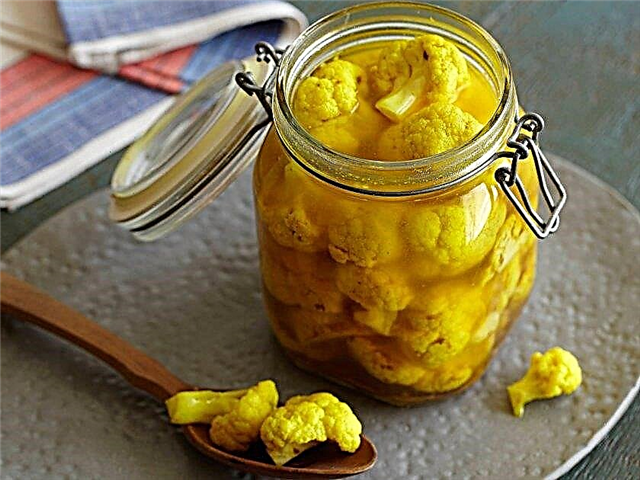
In general, such a process is simple and does not take much time, but allows you to save the product for a long time. Cauliflower is an extremely valuable vegetable, the use of which most beneficially affects the human body. Fulfillment of the recommended harvesting rules for this crop will allow for a long time to diversify the diet with its beneficial properties.

